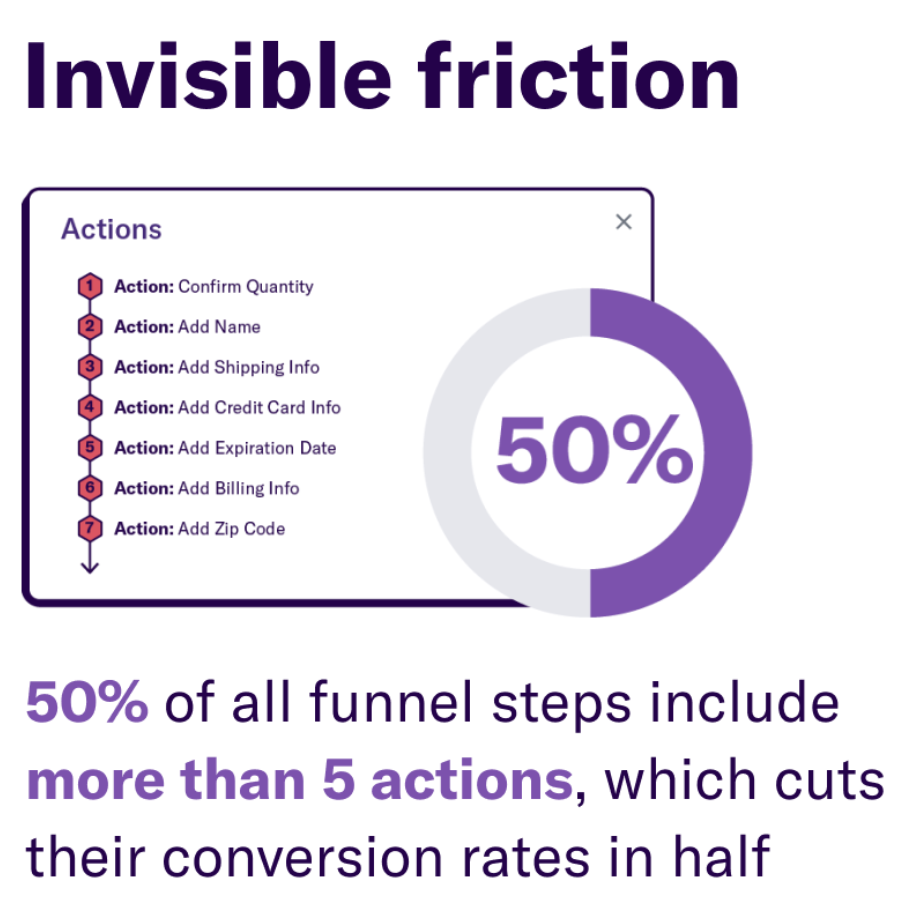Updated: April 25, 2024- 5 min read
Editor’s note: the following is a guest post by Heap.
Digital experiences are taking over the world. Already a large portion of interactions that used to take place in physical space now take place virtually. And this transformation is still in its infancy. For anyone willing to envision a new way to relate people to people, or companies to companies, the future is wide open – it’s bright. There’s a new truth to: if you can dream it, you can build it.
This transformation is especially true in the business world, where the digital experience is the primary interaction a company has with prospects and customers. In many cases it’s the only sign of interaction – the space between the person and you is your digital product or site.
This is why it’s critical to produce a delightful digital experience that compels, that attracts, that’s easy to use. Our survey data shows this: 89% of people say “ease of use” is very important or somewhat important when choosing between two websites that accomplish similar goals.
But there’s a disconnect between digital teams and their customers
What digital teams think they know about how users experience their sites is different from what users actually experience.
Thus 43% of consumers think the majority of websites were not designed around the needs of the end user. 80% of consumers think fewer than 75% of websites offer clear explanations of what they’re for and how to use them properly
Yet despite these numbers, a full 95% of product teams say it’s somewhat or very easy for users to navigate and use their site! Clearly these teams are not getting an objective view of their customers’ experiences.
The failure of tools to bridge this gap
For many years, data has promised to give teams the objectivity to bridge this gap. By capturing data on what customers click on, what paths they take, and how different users behave on your site, the thinking goes, teams can figure out what’s most important and prioritize the features that most move the bottom line. So why haven’t they?
It is true that developing a data-driven culture is difficult and requires more than just data. But we’d also propose that the primary responsibility for this failure lies in the hands of the tools themselves, which have failed to give teams either the data or the insights they need.
The data clearly shows this. While 71% of teams in our survey have up to 3 tools that give them data on how users interact with their product or site, only 16% of respondents say they know why most (>75%) of customers drop off their site. Only 24% of respondents say they have full insight (75-100%) into the user journeys on their site. When it comes to making data-driven decisions, the situation is more dire: only 19% percent of respondents say that most (>75%) of their prioritization or roadmap decisions are grounded in data.
What teams don’t know
Despite the amount of tools at their disposal, teams are not getting the insights they need. What do they know and what do they not know? What do they need to get to answers?
Data from our proactive insights customers, for example, shows that 38% of funnels are missing a key step. 38% of the time, teams are missing an important user action! More importantly: teams don’t even know they’re missing these steps. They don’t know what they don’t know in this case.
Similarly, 25% of funnels contain a step that’s skipped by 15% of users. This means that 25% of the time, teams are tracking something they shouldn’t be, getting a skewed set of metrics on conversion. Do teams know about this? Not often.

On a business and a psychological level, this lack of information produces all sorts of problems: worry that decisions are wrong. Inability to move quickly. Biased views based on what they already know, when what’s most important is finding information you don’t know about already. Which, arguably, is the point of having data in the first place!
A paradigm shift: Automated Insights
Digital experiences are taking over the world. How do you build a great one? You test, you measure, you learn, you repeat. What about the gaps in your knowledge? With Proactive Insights, you can fill them quickly. If you’re interested in learning more about the future of Insights-Driven Organizations, join us for an upcoming event.
Heap’s mission is to power business decisions with the truth. We empower fast-moving digital teams to focus on what matters — building the best digital experiences — not wrestling with their analytics platform. Heap automatically collects and organizes all customer behavioral data, allowing product managers to improve their products with maximum agility. Over 7,600 businesses use Heap to drive business impact by delivering better experiences and better products. Visit heap.io to learn more.
Meet the Author: Vijay Umapathy, Director of Product Management

Vijay Umapthay is a Product Management leader with 10 years of experience across consumer and B2B products, including Google AdWords, Inbox by Gmail, Jibo, and Heap. He is passionate about creating empowering products that push the technological and UX envelope, and more recently at Heap creating tools that enable product teams to move with agility and make informed decisions at the speed of their business. Outside of work, Vijay enjoys hikes, road trips, and taking cooking classes in every country he visits.

Updated: April 25, 2024




